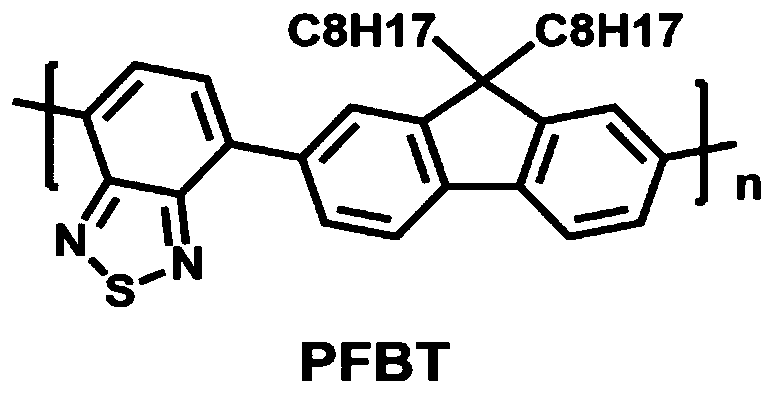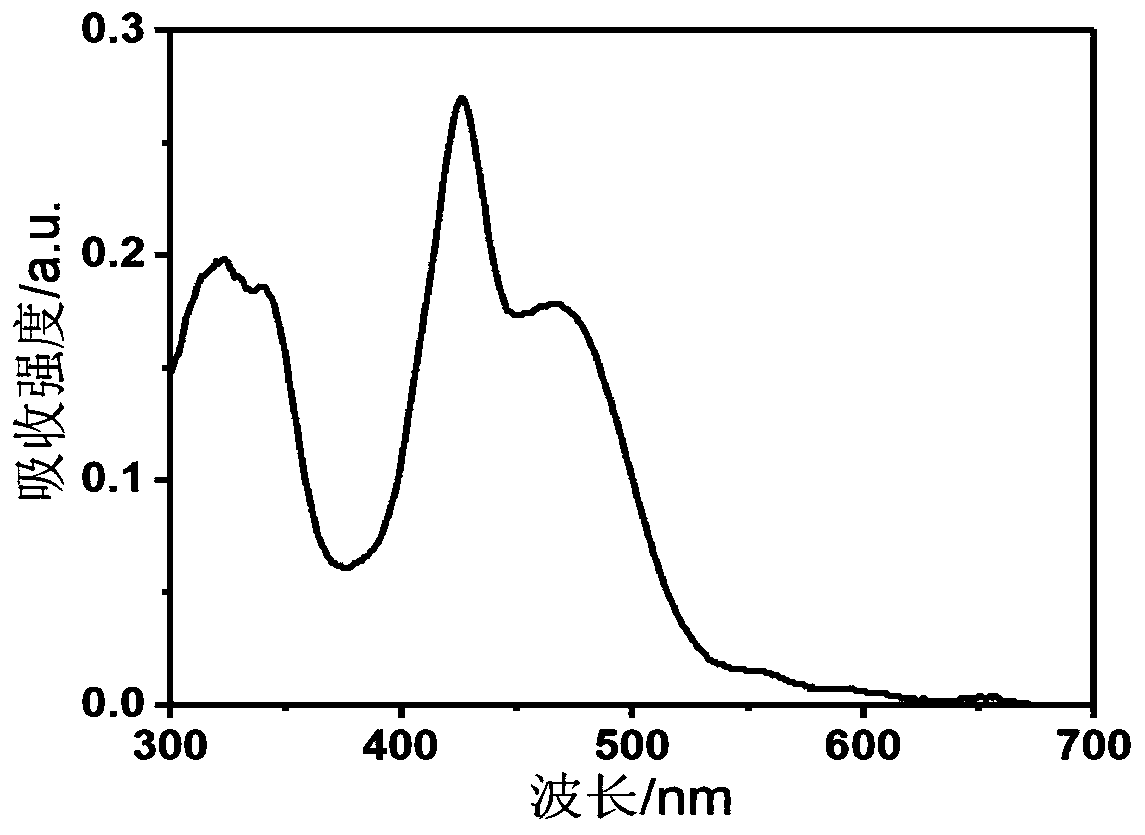Organic-inorganic hybrid photosensitizer and preparation method for hybrid nanometer diagnosis and treatment reagent
A technology for diagnosis and treatment reagents and photosensitizers, applied in the field of tumor diagnosis and biomedicine, can solve the problems of fluorescence quenching, nanostructure instability, and reducing the ability of singlet oxygen generation, and achieve the effect of enhancing stability and reducing fluorescence quenching.
- Summary
- Abstract
- Description
- Claims
- Application Information
AI Technical Summary
Problems solved by technology
Method used
Image
Examples
Embodiment 1
[0031] Mix 14.4 mg of vinyl-modified POSS-based porphyrin hybrid photosensitizer, 100 mg of 1-dodecyl mercaptan, and 4 mg of benzoin dimethyl ether (DMPA) into a 500-mL round-bottomed flask, and dry CH 2 Cl 2 As a solvent, pass nitrogen for more than 15 minutes to ensure that the entire reaction system reacts under the protection of inert gas nitrogen, and then use a 365nm ultraviolet lamp to irradiate for 60 minutes. After the reaction, the filtrate is extracted, dried, concentrated, and purified by chromatography to finally obtain A kind of organic-inorganic hybrid photosensitizer, its molecular structural formula is as follows figure 1 shown.
Embodiment 2
[0033] Such as figure 2 Shown is the molecular structure formula of the organic semiconductor material PFBT, F8BT commercially available from Shenzhen Ruixun Photoelectric Material Technology Co., Ltd., product number P1213, CAS: 210347-52-7, molecular weight>20000, PDI<3. The organic-inorganic hybrid photosensitizer synthesized in Example 1 is co-precipitated with an organic semiconductor material to form diagnostic reagent nanoparticles. The specific preparation process is as follows:
[0034] a. Dissolve the organic-inorganic hybrid photosensitizer in tetrahydrofuran to a concentration of 0.1 mg / mL, and keep it away from light for use;
[0035] b. Dissolve the organic semiconductor material PFBT in tetrahydrofuran until the dissolved concentration is 0.1 mg / mL, and keep it away from light for use;
[0036] c. Mix 1mL of the PFBT solution in step b with 0.2mL of the photosensitizer solution in step a, add tetrahydrofuran to a solution volume of 6mL, and mix evenly by ultra...
Embodiment 3
[0038] Such as image 3 , Figure 4 Shown are the UV spectrum and fluorescence spectrum of nanoparticles formed by the co-precipitation of an organic-inorganic hybrid photosensitizer and organic semiconductor material PFBT, respectively. Accurately configure 3mL of diagnostic reagent nanoparticles and use a UV spectrophotometer to test its UV spectrum. Spectrum, it is found that there are two ultraviolet absorption peaks of organic semiconductor materials at 340nm and 480nm, so the nano-particles of the diagnostic reagent will have a strong fluorescence emission at 500-600nm under the excitation of 480nm, and the diagram can show that the nano-particles of the diagnostic reagent Has decent fluorescence imaging.
PUM
 Login to View More
Login to View More Abstract
Description
Claims
Application Information
 Login to View More
Login to View More - R&D
- Intellectual Property
- Life Sciences
- Materials
- Tech Scout
- Unparalleled Data Quality
- Higher Quality Content
- 60% Fewer Hallucinations
Browse by: Latest US Patents, China's latest patents, Technical Efficacy Thesaurus, Application Domain, Technology Topic, Popular Technical Reports.
© 2025 PatSnap. All rights reserved.Legal|Privacy policy|Modern Slavery Act Transparency Statement|Sitemap|About US| Contact US: help@patsnap.com



